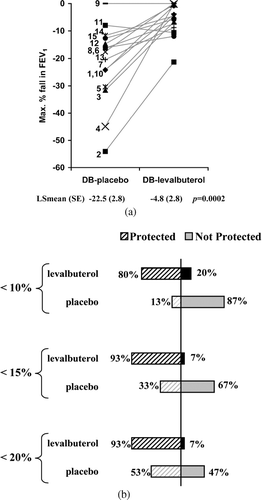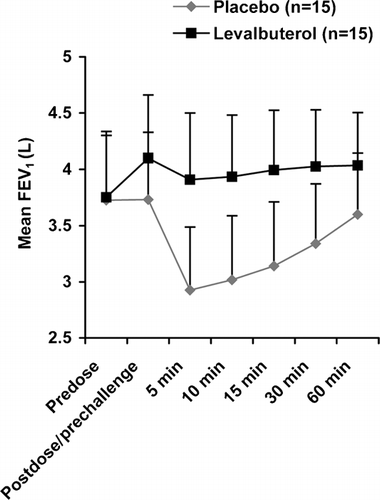Figures & data
Table 1 Demographics and baseline characteristics.
Table 2 Maximum percent decrease in FEV1 after exercise from two different baselines: postdose/pre-challenge and predose.
Figure 1 (A) Maximum percent decrease in FEV1 for each patient from postdose/pre-challenge after treatment with placebo (DB-placebo) or levalbuterol (DB-levalbuterol) during the double-blind period for each patient. Patient numbers (see ) are indicated and the solid grey lines are to aid following individual patient values. LS-mean (Least square mean) is the adjusted means for the effects in the model (see methods). (B) Percent of patients protected at 10%, 15%, and 20% is indicated.

